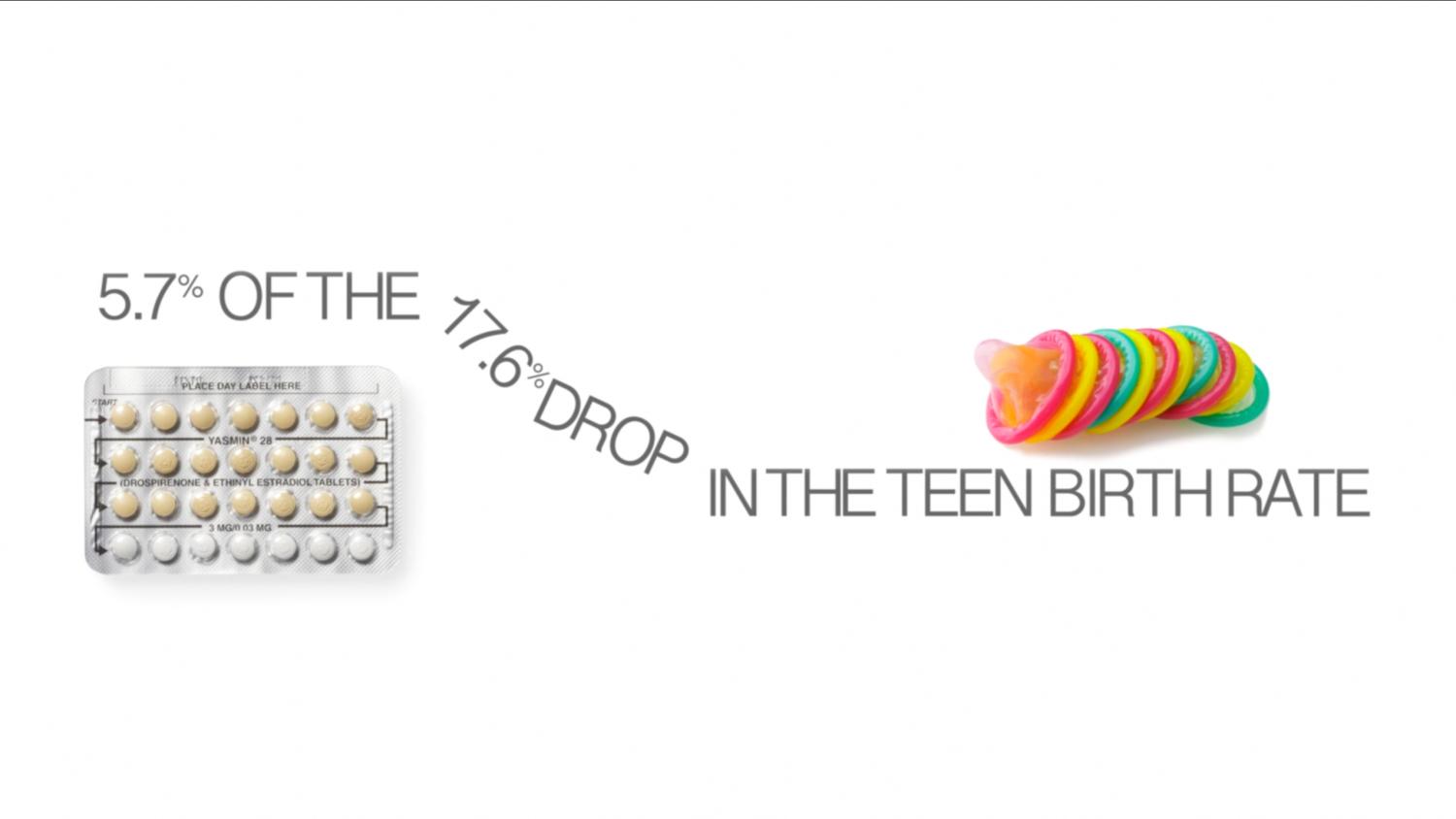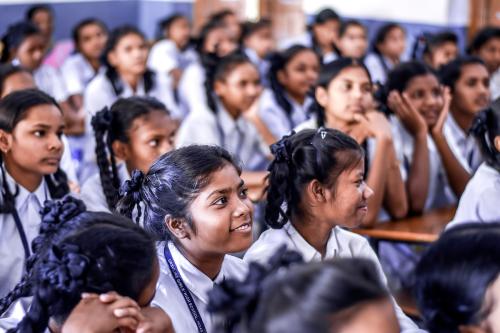This paper explores how specific media images affect adolescent attitudes and outcomes. The specific context examined is the widely viewed MTV franchise, 16 and Pregnant, a series of reality TV shows including the Teen Mom sequels, which follow the lives of pregnant teenagers during the end of their pregnancy and early days of motherhood.
Download the paper at the National Bureau of Economic Research’s website
We investigate whether the show influenced teens’ interest in contraceptive use or abortion, and whether it ultimately altered teen childbearing outcomes. We use data from Google Trends and Twitter to document changes in searches and tweets resulting from the show, Nielsen ratings data to capture geographic variation in viewership, and Vital Statistics birth data to measure changes in teen birth rates. We find that 16 and Pregnant led to more searches and tweets regarding birth control and abortion, and ultimately led to a 5.7 percent reduction in teen births in the 18 months following its introduction. This accounts for around one-third of the overall decline in teen births in the United States during that period.
Introduction
It is a longstanding and open question how exposure to media images affects the behavior of viewers. Policy advocates and cultural observers worry, in particular, about the impact of exposure to sexual and violent content on the behaviors of adolescents. In some circles, the idea that teenagers respond to media content is a foregone conclusion, but determining whether the media images themselves cause the behavior is a very difficult empirical task[1]. The purpose of this paper is to examine the impact of the widely viewed MTV show, 16 and Pregnant, on teenage attitudes and outcomes. This show purports to show the difficult reality of becoming a teen mother. As we document below, 16 and Pregnant has drawn large audiences among relevant subpopulations. One clear indication of the show’s success is the spinoffs it has generated: Teen Mom, Teen Mom 2, and Teen Mom 3. Could exposure to these media images of pregnant teens and very young new moms have had an impact on how teens think about pregnancy and ultimately on whether they become teen mothers themselves? If so, this would have important implications for thinking about how to effectively communicate with teens and influence their behaviors.
The context of teen childbearing in the United States makes this question an important one to study. In 2012, 29.4 out of every 1,000 girls between the ages of 15 and 19 (2.94 percent) gave birth in the United States. This rate is considerably higher than that in any other developed country, where typical rates of teen childbearing are more often in the range of 5 to 10 births per 1,000 girls in this age group (Kearney and Levine, 2012a). Though still an outlier internationally, the U.S. teen birth rate has declined dramatically over the past 20 years, falling from 61.8 births per 1,000 teen girls in 1991. This decline has occurred in two distinct waves. Between 1991 and 2008, it fell largely continuously from 61.8 to 40.2, representing an annual average rate of decline of 2.5 percent per year. Teen birth rates fell far more rapidly in the next four years, dropping from 40.2 to 29.4, or 7.5 percent per year.
The timing of the introduction of MTV’s 16 and Pregnant is such that it might conceivably have contributed in some measure to the most recent, very sharp decline. Ever since its introduction, various observers have made conflicting claims about the show’s influence on teens. Some have highlighted the show’s focus on the difficulties of raising a child at such a young age and have concluded from this coincident timing that the show is at least partially responsible for the recent decrease in teen childbearing rates[2]. Others argue that the show glamorizes teen pregnancy, with its cast members essentially becoming media “stars,” whose lives are followed in the tabloids well after their show airs[3].
In this paper, we take advantage of data from a number of sources to investigate the impact of the MTV show. Specifically, we investigate the following three questions: (1) Was exposure to the show substantial? (2) Did exposure to the show influence teens’ interest in birth control or abortion[4]? (3) Did teen childbearing outcomes change as a result of the show’s introduction? We use several measures of exposure, including Nielsen ratings data and the frequency with which individuals search for the show on Google and tweet about it on Twitter. We measure the influence on teens’ decision making process with data on the frequency with which teens include terms like birth control or abortion in their searches/tweets[5]. Finally, we examine the impact on teen birth rates using Vital Statistics Natality microdata.
We use multiple empirical approaches to answer these questions. First, we present a descriptive analysis using several of our data sources to measure exposure. Nielsen ratings data is a direct indicator, but we can also examine high frequency data (daily or weekly) available from Google Trends and Twitter to look for time series spikes in searches and tweets on the show’s title on the day/week that a new episode is released. Second, we conduct a similar analysis using high frequency data from these sources to look for increases in searches and tweets on terms like “birth control” when spikes appear in searches/tweets on the show’s title. Third, we take advantage of geographic variation in the data, examining whether locations with relatively higher levels of searches/tweets about 16 and Pregnant during the period when the show is on the air also experience relatively higher levels of searches/tweets about things like birth control.
Fourth, we exploit geographic variation in measures of the show’s viewership (as captured by ratings) to investigate whether differential exposure to the show led to differential changes in teen birth rates. We correct for the fact that interest in a show about teen pregnancy is likely to be higher in locations where the teen birth rate is high. Geographic fixed effects hold constant time invariant factors. Greater interest may also occur in those areas where teen childbearing is rising (or falling more slowly). To correct for this, we implement an instrumental variables (IV) strategy, predicting 16 and Pregnant ratings with a broad measure of MTV ratings from a previous period. The identifying assumption of the IV approach is MTV ratings in the period before the show aired would be unrelated to subsequent trends in teen childbearing.
The results of our analysis indicate that exposure to 16 and Pregnant was high and that it had an influence on teens’ thinking regarding birth control and abortion. Large spikes in search activity and tweets about the show are evident exactly at the time a new episode was released. We also see an associated spike in Google searches and twitter messages containing the terms “birth control” and “abortion.” Locations in which the show was more popular experienced greater increases in searches/tweets like this when the show was on the air.
Our most important finding is that the introduction of 16 and Pregnant along with its partner shows, Teen Mom and Teen Mom 2, led teens to noticeably reduce the rate at which they give birth[6]. Our estimates imply that these shows led to a 5.7 percent reduction in teen births that would have been conceived between June 2009, when the show began, and the end of 2010. This can explain around one-third of the total decline in teen births over that period. Data limitations preclude us from conducting separate analyses of pregnancies and abortions, but we note that teen abortion rates also fell over this period (Pazol, et al., 2013). This suggests that the shows’ impact is attributable to a reduction in pregnancy rather than greater use of abortion.
[1] In terms of sexual behavior, evidence is cited showing that teens who watch sexual content on television are more likely to experience a teenage pregnancy. For example, popular press pieces by Stein (2008) and Tanner (2008) cite evidence from Chandra, et al. (2008). But evidence like this does not isolate the effect of the exposure from the choice of a particular type of individual to watch such content.
[2] For example, see http://www.csmonitor.com/USA/Society/2010/1221/A-force-behind-the-lower-teen-birthrate-MTV-s-16-and-Pregnant and http://blog.thenationalcampaign.org/pregnant_pause/2011/11/us-teen-birth-rate-drops-a-dra.php.
[3] http://www.cnn.com/2011/OPINION/05/04/henson.teen.mom.show/index.html?_s=PM:OPINION, accessed 6/18/2013.
[4] Ideally, we would also conduct a full analysis of the impact of the show on sexual activity and contraceptive use as behavioral outcomes. We attempted to use data from the Youth Risky Behavior Surveillance (YRBS) system – years 2007, 2009, and 2011, to do that. These data are collected biannually in odd numbered years since 1991 for high school students who respond to the survey at school. A major disadvantage of using these data for this purpose, though, is that the sample sizes of youth in each geographic area can be quite small. In many states in which data are available, surveys were only completed by perhaps a thousand students regarding sexual activity and then perhaps a few hundred of them regarding use of contraception among those sexually active. Sample sizes at this level per state resulted in weak statistical power, leading us to omit a discussion of our analysis in this paper.
[5] Identifying relevant terms included in searches or tweets is critical in this process. We explored other terms attempting to identify interest in sexual activity and adoption, but were unable to convince ourselves that they were sufficiently narrowly focused on the same concept we wanted to explore. For instance, searches for “how adopt” were dominated over our time period by the 2010 earthquake in Haiti and tweets including the term “adopt” or “adoption” were frequently not about children. In terms of sexual activity, we considered searches for terms like “does sex hurt” or “sex first time,” as ones that may represent the reflective consideration about having sex that we want to test. We did not find a relationship between media exposure and these search terms.
[6] Teen Mom 3 was not on the air yet during our sample period.









